Between juggling staffing gaps, snack prep and trying to squeeze in a moment to breathe, planning fresh phonics activities EYFS children will actually enjoy can be added to a long list of tasks.
Phonics in the early years doesn’t need to mean flashcards and formal teaching. In fact, the best phonics games EYFS children love are the ones that feel like play, are simple, interactive and full of sounds.
In this article, we share 15 engaging phonics games and activities for your nursery to try.
What are the EYFS Phonics expectations in nursery?
If you’re working in an early years setting, you’re already familiar with the foundations of EYFS phonics. In nursery, the focus is squarely on Phase 1 phonics – where children explore environmental sounds, body percussion, rhythm and rhyme, and sound discrimination.
We’re not pushing children to read or write yet. This stage is all about listening, tuning in to sounds and beginning to understand how language works. It is essential your practitioners understand what early Literacy covers and what the children will learn in Key Stage 1.
For children who are pre-verbal or still building confidence with speech, EYFS phonics ideas should always prioritise modelling and play.
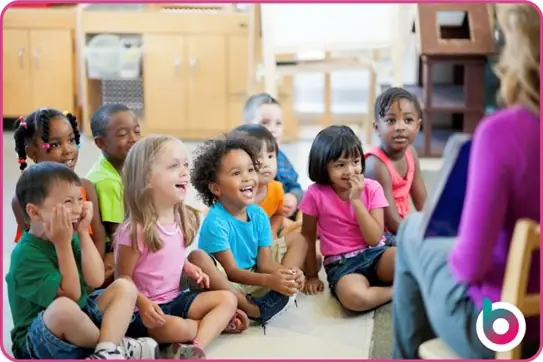
Overwhelming them with words or jumping ahead too quickly can cause confusion. It’s why clear speech, repetition and plenty of time to process and respond are essential.
At Blossom, we love supporting nurseries with tools that make observation and planning around EYFS phonics so much easier – from tracking communication milestones to sharing learning moments with families using our Learning Journey.
Now, onto the fun stuff!
15 Brilliant phonics activities EYFS settings can try
We’ve pulled together a list of our favourite low-prep, high-impact phonics activities for practitioners. These are the kind of activities that don’t need expensive resources or hours of set-up – just your voice, your imagination and a bit of fun.
1. Sound walks
Go for a wander indoors or out and stop regularly to listen. Can children hear birds, traffic, dripping taps or rustling leaves? Talk about the sounds and imitate them together. A classic EYFS phonics winner.
If your setting uses visual aids like pictures or symbols, take these along with you to model your own thoughts and observations. This type of modelling will help those who are at the pre-speaking stage.
2. Feely bag sounds
Pop some sound-making objects (like rice in a container, foil, or squeaky toys) into a bag. Pull one out, make its sound and encourage children to guess or copy it.
This can be a great way to boost communication and language confidence through some low-start, high-ceiling phonics games. Get even more creative by adding sensory dimensions to your feely bag, we know how much children love sensory play activities.
3. Silly sound soup
Choose a simple phoneme (like ‘m’ or ‘s’) and pop matching objects into a bowl. Stir it up with plenty of noises: “Ssssuper sssoup!” Great for building sound awareness and introducing phonics games EYFS children always enjoy.
This game is a perfect way to avoid the common phonics teaching mistake of teaching the letter names instead of the sounds.
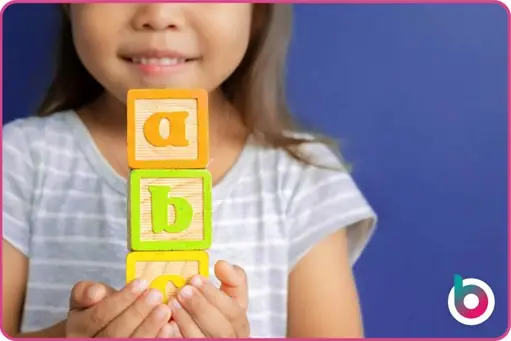
4. Body percussion songs
Swap out standard claps and stamps for knee taps, finger clicks and tummy pats. Build rhythmic awareness and coordination while sneaking in that all-important EYFS phonics learning.
Here are a list of our favourite songs ideal for body percussion:
- If You’re Happy and You Know It
- Head, Shoulders, Knees and Toes
- The Hokey Cokey
- Banana Banana Meatball (by GoNoodle)
- Boom Chicka Boom
- We’re Going on a Bear Hunt
- I Am the Music Man
5. Listening bingo
Use sound recordings or real-life objects. Can the children guess what they hear? Match the sound to a picture or object for extra fun. Think about animals, types of transport like planes and trains and linking the sounds to their favourite things.
6. Mirror mouth movements
Use mirrors to show children how different sounds look on our faces. Try lip popping, tongue clicking and blowing raspberries. Ideal for children still learning how to shape sounds.
7. Sound treasure hunt
Hide objects that start with your target sound and let children hunt for them. Say the sound out loud each time they find one to reinforce that connection.
Here are some more ideas for sound treasure hunts:
Initial sound hunt (indoor)
Pick a target sound like ‘s’ or ‘b’. Hide objects starting with that sound around the room.
Example for ‘s’: spoon, sock, star, snake toy, sticker.
Garden sound scavenger hunt
Go outdoors and listen for real-world sounds. Encourage children to find where the sound is coming from.
Example sounds: birds tweeting, leaves rustling, gates creaking, wind blowing.
Object-sound match hunt
Place a range of objects around the room and play matching sounds on a tablet or speaker (e.g. keys jingling, bell ringing, duck quacking). Children must find the object that matches the sound.
‘What’s That Sound?’ hunt
Use a mystery box or bag filled with noise-making items. Children pull one out, make the sound, then hunt for something in the environment that matches or mimics it.
Examples: foil for crinkling, rice shaker, tissue paper rustle.
Animal sound hunt
Hide soft toys or animal pictures. Play a corresponding animal sound and get children to find the matching animal.
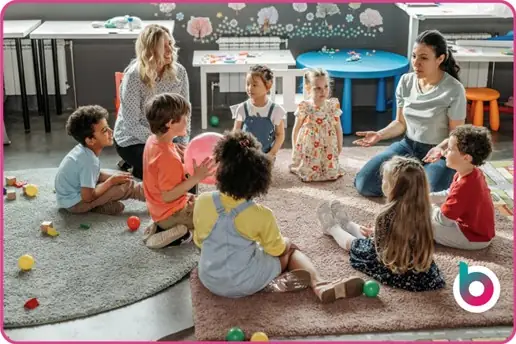
8. Singing sack
Fill a sack with song clues (like a toy duck for Five Little Ducks, or bunnies for Hop Little Bunnies) and let children pull one out. Songs build rhythm and rhyme naturally – a core part of any strong EYFS phonics foundation.
9. Voice sounds game
Experiment with voice volume and pitch – whisper, shout, squeak and growl. These silly phonics activities EYFS children love build control and confidence in using their voices.
10. Bubble popping sounds
Blow bubbles and pop them while saying a chosen sound. “P, p, p!” with every pop helps children get used to sound repetition in a playful, stress-free way. The mouth movement to blow the bubbles using a bubble wand helps them to form the sounds and shapes to progress their communication and language skills.
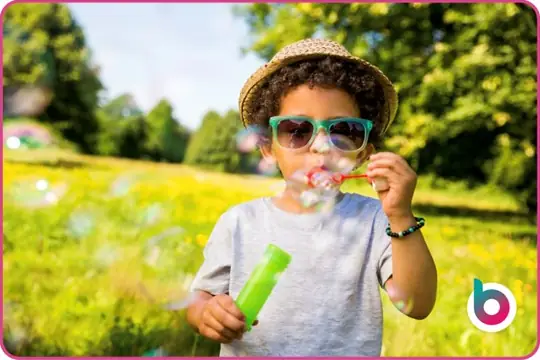
11. Rhyming baskets
Put together a basket of rhyming items – cat, hat, mat – and explore the sounds together. Reading rhyming stories afterwards builds the pattern.
Looking for examples of rhyming stories for early years? Here’s a list to get you started:
- Shark in the Park –Nick Sharratt
- Each Peach Pear Plum –Janet and Allan Ahlberg
- The Gruffalo –Julia Donaldson & Axel Scheffler
- Rhyme Crime –Jon Burgerman
- The Rhyming Rabbit –Julia Donaldson
- Oi Dog! / Oi Cat! / Oi Puppies! –Kes Gray & Jim Field
- We’re Going on a Bear Hunt –Michael Rosen & Helen Oxenbury
- Ten Little Dinosaurs –Mike Brownlow & Simon Rickerty
- Brown Bear, Brown Bear, What Do You See? –Bill Martin Jr. & Eric Carle
- Mad About Minibeasts –Giles Andreae & David Wojtowycz
12. Animal sound parade
Stomp like elephants, slither like snakes, roar like lions or bleat like goats. This helps children explore sound, movement and expression all at once.
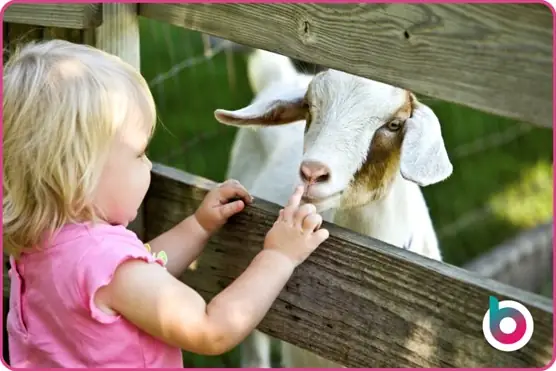
13. Instrument explorers
Give children access to shakers, bells and other simple instruments. Can they make a soft sound? A loud one? Talk about pitch, tempo and texture. Get creative with your recycling and make some eco-friendly instruments as part of your expressive arts and design activities.
14. Name alliteration game
Make up alliterative sentences with children’s names: “Bouncy Ben bakes buns.” Not only fun but fantastic for phoneme awareness and sound matching. This can help children who are preparing to move to reception in September, giving them opportunities to recognise their names’ starting letters, fall under simple school-readiness activities.
15. Storytime with sound effects
Choose familiar stories and add sound effects with voices or instruments. Pause to let children join in with repeated phrases or sounds. One of our favourite EYFS phonics ideas for story lovers.
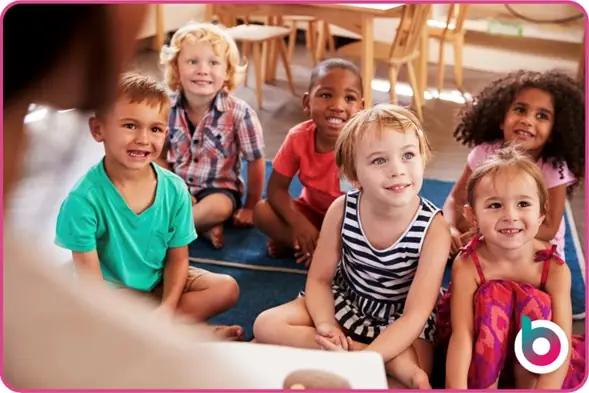
Supporting pre-verbal and EAL learners through phonics
If a child isn’t speaking yet, or English is their additional language, we always take a gentle, observational approach. There’s no rush. The goal with phonics activities EYFS is to tune them into sounds, help them feel confident and support them with responsive interactions.
Remember, emotional connection and safety are the foundation for communication development.
Use gestures, repeat key words, and pause for children to process and respond – even if that’s just eye contact or a smile.
Narrating play clearly and using consistent phrases gives them the chance to absorb and build vocabulary naturally.
Blossom’s Daily Diary and observations tools are perfect for capturing those small-but-mighty milestones, whether it’s copying a sound or joining in with a rhyme.
And if you’re looking for a way to show progress over time without spending your weekends glued to your laptop, our EYFS Progress Tracking features can take the heavy lifting off your shoulders.
Your next phonics steps
Phonics in the early years isn’t about ticking boxes – it’s about giving children the confidence to explore sounds and enjoy the richness of language.
When you embed phonics games EYFS children genuinely enjoy into your daily routines, you build strong, confident communicators without even realising it.
And when you need support, we’re here. Blossom is built by nursery people, for nursery people. Our software is designed to save you time so you can focus on what matters most – the children in your care.